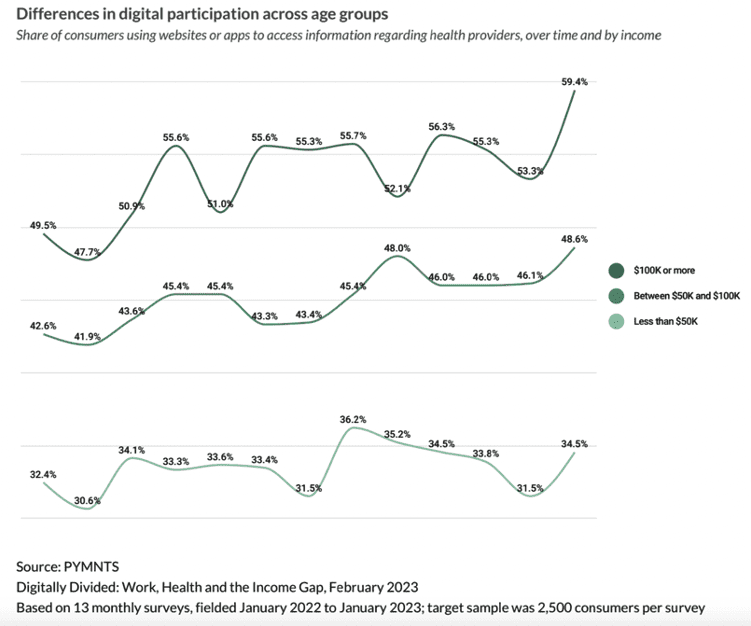
Regular, reliable access to the internet has ramifications across all facets of daily life.
However, billions of people around the world remain on the other side of the digital divide, living their daily lives without access to reliable broadband, including many in America.
PYMNTS research in the 2023 report, “The ConnectedEconomy™ Monthly Report: Digitally Divided — Work, Health and the Income Gap,” finds that as digital solutions continue to transform critical areas like healthcare, an unfortunate gap is widening between high-income consumers and low-income consumers.
The most recent data shows that high-income consumers are 70% more likely than low-income consumers to participate in the digital economy and are now twice as likely as low-income consumers to use digital onramps like websites or apps to access healthcare services.

While there has always been a divide between low-income and high-income consumers when it comes to using the internet for healthcare access and to engage with care providers, that gap is growing.
Fifty-nine percent of high-income consumers relied on digital access to healthcare services in some way, whether to pay bills, schedule an appointment, or communicate with providers, among other services, in January.
This is up from 50% of high-income consumers during the same period the year prior.
A substantially lower number of low-income consumers reported the same. Just 35% of low-income consumers used digital to access healthcare services or communicate with their providers in January.
Still, that number is up from 32% in January 2022.
As reported by PYMNTS, ongoing advances in satellite-delivered broadband beamed down from space offer hope in bridging the digital divide and its corresponding economic impact across health and other important services that create compounding disadvantages for underserved and unserved populations and communities.